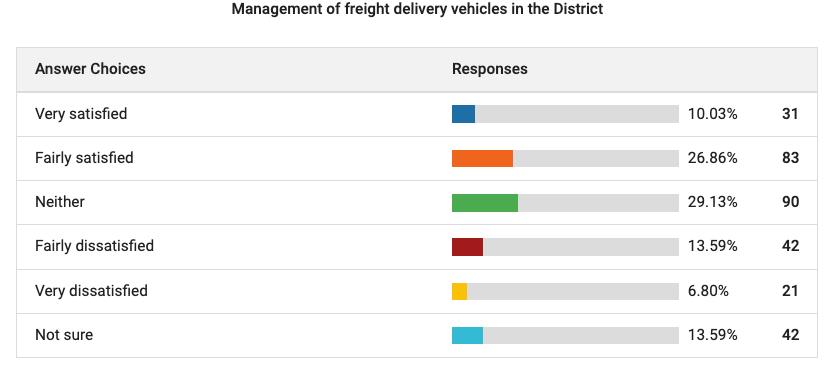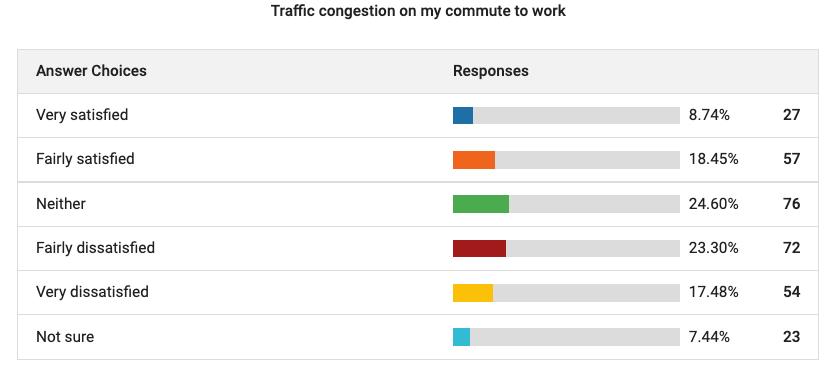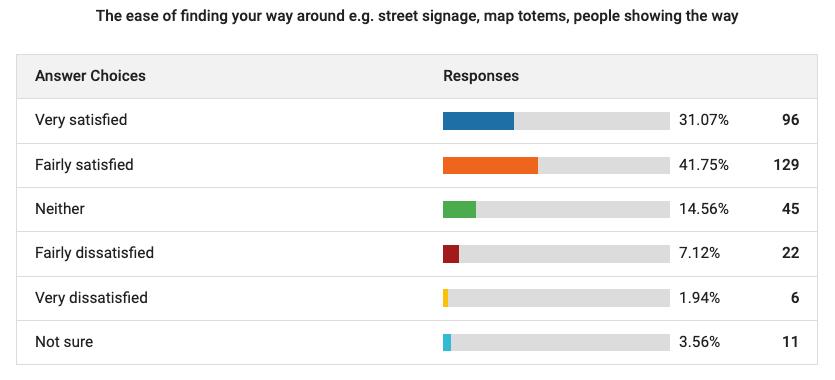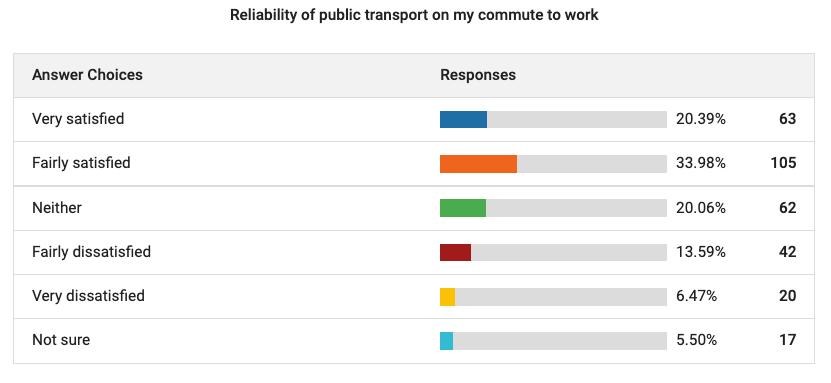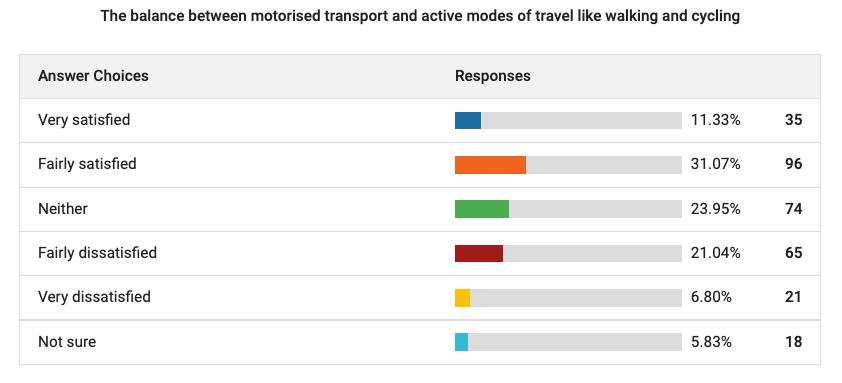Connecting Colmore
A green paper on the theme of Accessible & Connected BID Term 4 and Beyond
Introduction
This green paper is aimed at consulting on the goals and aspirations relating to the Accessible & Connected (A&C) work stream for Colmore BID Term 4 and beyond. The content has been derived from feedback from A&C members, individually and as a group (the latter at a ‘blue-sky’ session held in lieu of a normal A&C meeting on 14th February 2022.
A&C achievements
The A&C work stream has one of the lowest budgets of any working group in Colmore BID. Despite this, it has managed to steer the Colmore BID response to a range of challenges and opportunities in the years since it was founded, along with the BID itself, in 2009. It has also led on policy synthesis that has had real-world effects in the District.
• A&C played a key role in the production, publication and utilisation of Snow Hill Interchange Plan, which directly led to the Snow Hill Public Realm programme including Colmore Row outside Snow Hill Station, and Cornwall Street.
• Freight Consolidation Research examining how freight vehicle movements around the District can be rationalised to improve air quality.
• Partnership working with Birmingham City Council and local universities to bring hyperlocal air quality monitoring to Colmore Row.
• A pilot project to improve broadband speeds for businesses around Edmund Street and Church Street, making superfast broadband a reality.
• Backing local initiatives to make cycling safer and more attractive.
• Supporting schemes such as Bike Share and the e-Scooter pilot.
• Providing help and sign-posting on A&C issues for businesses during the turmoil of the COVID-19 pandemic measures.
• Kick-starting the Interconnect way-finding project in the City Centre, as well as supporting its recent revival.
• Producing and distributing maps of the District with local businesses highlighted.
Taking stock
The environment in which we find ourselves has changed since 2009. Climate change has become much more central to the thinking of many organisationsprivate, public and third sector - and it rightly dominates our thinking about the next BID term and beyond.
Innovations in micro-mobility and the possibilities of mobility-as-a-service (MaaS) now play a role; terms that were unheard of in BIDs (along with most other organisations) across the UK a decade ago. These should be seen as tools to counter climate change as well as offering workers and visitors to the District more choices on travel.
The confluence of the place-making and place-connectivity aspects of greening are becoming more apparent and should influence our thinking and resourcing in the decade ahead. These too should be weighed by their climate-ameliorating action as well as their contribution to an attractive and accessible District.
The post-COVID-19 human world has shifted on its axis: the five day a week commute appears to be dead for many of the kind of businesses based in the District; train patronage is still below pre-pandemic levels, after years of continual growth; public transport still suffers from comparison with London and the rise of electric cars gives us pause for thought in terms of their place in the transport hierarchy (though an easier decision in a City Centre like ours). How do we balance the need for resource efficiencies with the notion that encouraging public transport use demands that service quality (in terms of experience and frequency) needs to be high?
The baseline
Colmore BID have carried out a mid-term review in preparation for the renewal ballot in 2023, following on from similar research in 2012 and 2016. A survey forms a major part of the research and several questions relate to our topic. The sample size, n, was 309 in 2022 and was 236 in 2012. The Margin of Error in 2022 is around 5.55% with a confidence interval between 90% and 95%. For 2012 the MoE was 6.36% and the confidence interval around 88%.
How satisfied or dissatisfied are you with each of these aspects of the Colmore Business District?
Salient points were:
• Over 72% of people are satisfied with way-finding across the District.
• Only just over half of people are satisfied with the reliability of public transport for their commute.
• Less than a third of people are satisfied with the cost of public transport on their commute.
• More than 65% of people are neutral or negative about the level of congestion on their commute.
• Views on the cost and/or availability of parking while at work are very varied.
• Only 42% of people are satisfied with the balance between motorised and active transport modes.
• Only 36% of people are satisfied with the management of freight vehicles in the District.
What is the main mode of transport you use to get to work? (overleaf)
(*Note: despite the wording of the question, more than one mode choice was allowed, hence the percentages add up to more than 100%. E.g. people who take the car to a train station chose ‘Car’ and ‘Train’).
Compare this result to the one from a similar question back in 2012:
FIGURE 2: 2012 RESULTS OF QUESTION ON COMMUTE MODE

Most of the changes are within the MoE except the increase in walking, which is noteworthy. Other than the change in walking these results seem to indicate how little progress has been made in 10 years, despite millions of pounds spent on cycling
 FIGURE 1: 2022 RESULTS OF QUESTION ON COMMUTE MODE
FIGURE 1: 2022 RESULTS OF QUESTION ON COMMUTE MODE
infrastructure, micro-mobility projects, cycle hire, digital travel information, Swift, new Metro lines and other interventions aimed at increasing the shift to active travel and public transport. The question is: what do we want this pie chart to look like in 2032?
How will you get to work in 2032?
On the subject of the commute, one interesting result from the mid-term research seems to confirm the death of the five-day office week, though perpetual WFH seems not to have arrived for many people:
 FIGURE 3: WORKING GROUP ASPIRATIONS FOR COMMUTE MODE IN 2032
FIGURE 3: WORKING GROUP ASPIRATIONS FOR COMMUTE MODE IN 2032
Looking ahead
Perhaps the best way to start to shape the future is to look ahead and imagine the District we want to see. These aspirations should group around three main themes:
A. Climate change and the push for Net Zero.
B. Wellbeing. A City that actively promotes and supports physically and mentally healthy citizens.
C. Efficiency. Cities tend to amplify systemic inefficiencies, particularly in transport.
Active Travel:
• Increase in the number of pedestrian-centred streets and spaces across the District. (B)
• Eradication of disability-unfriendly crossings and footways. (B)
• Promotion and encouragement of cafe culture. (B)
• More greening projects that accentuate walking and dwelling. (A,B)
• Boulevarding of Great Charles Street. (A,B)
• Intelligent use of data collected by BID Security Teams to reduce ASB and improve safety, perceived and actual. (B)
• Extension to the Interconnect way-finding scheme, making totems interactive with users, responsive to a web app that can tailor journey advice to the user at that precise moment, based on local and regional travel conditions. (C)
• A high capacity cycle hub in the District. (A,B,C)
• End-to-end journey audits and follow-up infrastructure provision. Too many routes just stop at the Ring Road. (A,C)
• Improved awareness around which buildings provide showers etc and how good they are. Work with building owners and FMs to promote best practice. (A,B)
• Work with local cycling and walking organisations to produce media campaigns aimed at:
• improving driver behaviour; (A,C)
• ‘mainstreaming’ cycling as a transport mode choice; (A,B,C)
• Building on the growth of walking as a commuter mode; (A,B,C)
• the transformational potential of cycling, from the viewpoint of the individual and as a City. (A,B,C)
• Improving the legibility and availability of cross City Centre cycling and reducing routes that make sense but are illegal. (A,C)
• More on-street cycle and e-scooter parking, with better security. (A,B,C)
• A more relaxed approach to cycling traffic management, with a presumption for legal two-way cycling on all District streets. (A,B,C)
• Thriving cycle and electric bike hire through continued support and expansion of the Bike Share project. (A,B,C)
• Legalisation of e-scooters and other micro-mobility modes. (A,C)
• Retention and development of the Voi scheme or similar. (A,C)
Public Transport:
• Fully devolved and regulated public transport provision across the West Midlands. (A,C)
• 100% zero emission bus fleet. (A)
• Effortless multi-modal ticketing. (A,C)
• Sensible use of District streets to accommodate bus routes (terminal and cross-city), with the goal of removing buses altogether from Colmore Row. (A,B,C)
• Expansion of the Metro network and more reliable trams. (A,C)
• Rail capacity that leads demand instead of trailing it. (A,B,C)
• Flexible rail season ticket systems reflecting hybrid work patterns that seem to be here to stay. (A,B,C)
• Review Park & Ride facilities that apply to the District, find where the gaps are and lobby for improvement. (A,B,C)
• Make sure we are HS2-ready. (A,C)
• Fully support the redevelopment of Snow Hill Station and the interchange and public realm improvements that significant project offers.
Freight:
• Edge of District freight consolidation centre available for all logistics companies to use. (C)
• Cycle-based and/or electric low impact final mile distribution in the District for all but the heaviest deliveries (e.g. large items or bulk food delivery to supermarkets etc). Exempt from timed access control system (see below). (A,C)
• Time access control to key streets where HGV deliveries must be made, or perhaps a trial of a kerb-side booking system for freight deliveries. (C)
• Controlled service access for streets with low motorisation e.g. Waterloo Street after the new public realm improvements are made. (A,B,C)
• Exploration of automated enforcement systems for whatever freight control methodologies are eventually employed. (C)
• Review and refresh City Centre Delivery Zone signing scheme. (C)
Cars:
• Right-sized provision of on-street electric vehicle (EV) charging points. (A,C)
• Minimum provision of on-street parking for private vehicles. (A,C)
• Right-sized provision of disabled parking. (B)
• Support for intelligent road pricing. The increase in EVs, and loss of revenue from fuel taxes present an opportunity for drivers to pay fairly for use of roads at certain times and in certain areas (e.g. City Centre). (A,C)
• 100% zero emission taxi fleet (Hackney Carriage and Private Hire). (A)
• Better working with micro hire providers, including vans. (A,B,C)
• Working with off-street parking providers to improve the offer across the District. (C)
• Judicious expansion of streets with low motorisation. (A,B)
All on-street modes:
• Significant improvement in the standard of comfort and safety afforded by sound maintenance of footways and carriageways. (C)
• Proactive and creative use of social media, creating content that extols the benefits, social and personal, of modal shift and not seeing modal shift as an end in itself. This accords with the concept of ‘Citizen Focused Mobility’ described in the LTP5 Green Paper . (A,B) 1
Weaving the reality from a BID perspective
Few of the aspirations outlined above are within the direct control of a BID. Some we can leverage through our continued efforts at public realm improvements made with public sector partners. Others we can merely influence. But we show we care about making these aspirations a reality by documenting, publishing and publicising our commitment to them. That gives us a platform - and a motivation to access other platforms - to get our wishes across and influence the real power-brokers who can make our aspirations real, and who are often waiting for organisations like ours to show up and support them because our aspirations are often theirs too.
This green paper is a first stage of that process.
Scope
Scope is an important factor in setting out what we want to achieve. We cannot think merely in terms of the Colmore BID boundary, with no consideration for what happens in other City Centre BID areas and in those areas of the City Centre that are not within a BID. Our growing links to other City Centre BIDs via City Centre Strategic Partnership (CCSP) and the nascent Joint BID Executive (JBE, involving joint working between Colmore BID and Central BID) offer the possibility of expanding the scope of some of our aspirations for active travel and public transport.
What’s in a name?
This Working Group has been called Accessible & Connected since the inception of Colmore BID in 2009. It reflected the Group’s interest in both physical mobility and digital connectivity. The latter interest - digital connectivity - has now moved largely beyond the scope of the BID and our focus on physical mobility must surely reflect the urgent nature of the Climate Emergency declared by Birmingham City Council in 2019. On that basis we could rename the Group. Possibilities include:
• Net Zero;
• Net Zero Transport;
• Transport Accessibility & Climate Change;
• Accessible & Sustainable Transport.
The Group agreed a change of name was necessary and chose Accessible & Sustainable Transport. Reimagining transport in the West Midlands - WMLTP5 DRAFT Core Strategy (p.12)
Business Planning: pledges
The following pledges for BID4 have been put forward for consultation at this Group and more widely:
• Work with Birmingham City Council on the management of freight and delivery vehicles entering Colmore Business District and to develop long-term solutions.
• Work with Birmingham City Council on the redevelopment of Snow Hill Station.
• Partner local cycling organisations to produce media campaigns aimed at:
• Improving driver behaviour.
• Mainstreaming cycling as a transport mode choice.
• Building on the growth of walking as a commuter mode.
• Transformational potential of cycling from the view point of the individual and as a city.
• Promote the use of public transport as a commuter mode, balancing the sometimes competing demands of people-friendly, greener public realm and efficient access to the public transport network.
• Lobby organisations on various transport issues, which will be underpinned by public experience, climate change findings, well-being and how efficient it is to get into the District.

